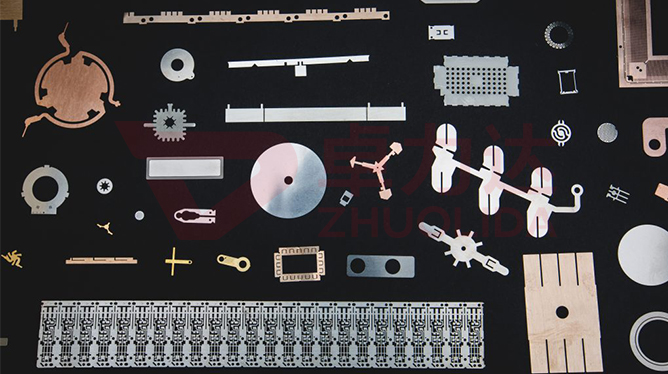
Hardware etching processing is an important manufacturing process, which is widely used in electronics, communications, automotive, medical and other fields. This article will introduce the advantages and process of hardware etching processing in detail.
I. Advantages of hardware etching processing
1. High precision and high efficiency
Hardware etching processing can realize high precision and high efficiency production through computer control. The use of advanced CNC machine tools and machining centers can accurately control the machining process to ensure the production of parts with high precision and high efficiency.
2. Complex shapes and structures can be processed
Hardware etching processing can process a variety of complex shapes and structures, such as micro-small parts, thin plate parts, three-dimensional curved parts. This makes hardware etching processing has great advantages in manufacturing difficult and demanding parts.
3. Environmental protection and energy saving
Hardware etching process produces a small amount of waste liquid and exhaust gas and other pollutants, while the materials used can be recycled and reused. This makes the hardware etching process an environmentally friendly and energy-saving manufacturing process.
4. Reduce manufacturing costs
Hardware etching processing can reduce manufacturing costs through mass production, and also reduce the number of molds and tools, thus reducing production costs.
II, the process of hardware etching processing
1.Pre-preparation
In the pre-preparation stage, you need to prepare the raw materials, such as stainless steel, copper, aluminum and other metal materials. Also need to clean and dry the raw materials to ensure that the process will not be contaminated.
2. Design pattern
In the process of hardware etching, you need to design the pattern first, so as to facilitate the subsequent processing. The design pattern can be drawn by CAD software or by hand.
3.Laminating
The designed pattern needs to be transferred to the metal surface, this process is called lamination. This process is called laminating. Specific films or dry films are used to transfer the pattern to the metal surface.
4. Etching
After the lamination process is completed, the metal surface needs to be etched. This process dissolves the unprotected portion of the metal surface through a chemical reaction to form the desired shape and structure of the part. Commonly used corrosives include acid corrosives and alkaline corrosives, the specific use of which corrosives need to be based on the type of metal to be processed and the use of the scene and other factors to determine.
5. Film removal and cleaning
After the corrosion is completed, it is necessary to remove the film and cleaning. Remove the film is attached to the film on the metal surface with chemical reagents or mechanical methods to remove clean, in order to facilitate subsequent processing or use. Cleaning is to remove the residue and dirt on the metal surface to ensure the quality and safety of the product.
6. Post-treatment
The post-processing stage includes quality checking, surface treatment and rust prevention treatment of the products. Quality inspection is mainly to check the size, shape and surface quality of the products to ensure compliance with the design requirements and relevant standards. Surface treatment is mainly to improve the appearance quality and corrosion resistance of the product, which can be treated by spraying paint, chromium plating, oxidation and other processes. Antirust treatment is mainly to prevent the product from being corroded in the process of use, and can be processed by applying antirust oil, spraying antirust paint and other methods.
In conclusion, hardware etching processing has the advantages of high precision, high efficiency, processing of complex shapes and structures, environmental protection and energy saving as well as reducing manufacturing costs, and is widely used in various fields. The process includes pre-preparation, design pattern, laminating, etching, de-filming and cleaning as well as post-processing stages, each of which has its own specific operating procedures and precautions that need to be strictly controlled to ensure product quality.
Contact: andy_Lai
Phone: 18938693450
E-mail: yw9@zldsmt.com
Add: Building A3, Huafa Industrial Park, Fuyong Town, Fuyuan Road, Fuyong Town, Baoan District, Shenzhen,China